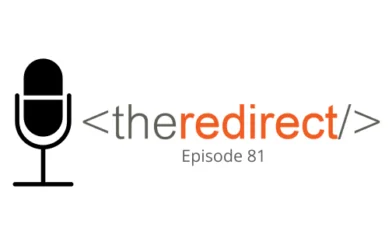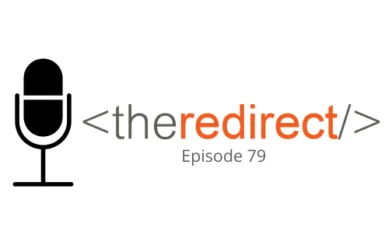Episode 61 / November 9, 2018
Listen now:
Welcome to The Redirect Podcast, where the BlackTruck team shares recent insights and takeaways from the world of search marketing.
We’re now well into the FOURTH quarter of 2018(!). The end is in sight, and for those of you making that last push through the holiday selling season, be sure to go back and listen to the last episode and check out some holiday campaign tips we’ve highlighted.
In this week’s episode:
- We explore changes that are coming to Google Ads with new metrics that could prove to be very helpful for PPC managers (begins at 2:45).
- As the new version of Google Search Console continues its rollout of improved legacy features, we’re keeping tabs. The latest is the introduction of “Domain Properties” (begins at 12:50).
- Finally, we round out the discussion with some insights and predictions into what’s going to be important in SEO for 2019. (begins at 20:58).
More changes to Google Ads!
New changes come in the form of position metrics—an actual change we’re excited about, and anybody who’s heavy into managing Google Ads should also be.
Hopefully we all see the problem with ad positions, or ad positions reports as they currently exist; they’re not very accurate. This is where you’ll see metrics that tell you your ad ranks an average of 1.3…I’m sorry, what?
We’ve had data available for some time now that allows us to see an estimate on the top of page CPC, above organic listings CPC, etc. That’s all competitive data that’s available to you.
What’s available or to come?
- Impr. (Absolute Top) %: This is what most people think of as “position one.” The metric shows the percent of your ad impressions that are shown as the very first ad above the organic search results.
- Impr. (Top) %: The percent of your ad impressions that are shown anywhere above the organic search results.
- Search (Absolute Top) IS: The impressions you’ve received in the absolute top location above the organic results divided by the estimated number of impressions you were eligible to receive in the top location (“IS” = impression share).
- Search (Top) IS: The impressions you’ve received in the top locations above the organic search results compared to the estimated number of impressions you were eligible to receive in the top location.
Read more at Search Engine Land.
Side note: Discussion led to Jumpshot data—here’s a link to their Resources where they share some great insights for free.
Domain Properties Coming to Google Search Console
Google is experimenting in the new Search Console with a feature called “Domain Properties.” It’s not available everywhere yet. Old Search Console had a similar feature that didn’t work very well, called “Property Sets,” and it required you to verify all of the different versions or your website.
A year ago, when we at BlackTruck relaunched our site, we decided to go from non-secure (http://) to secure (https://). This meant a new web property in Google’s eyes, even though all http was being redirected to https. In Search Console, this rendered as a break in our website’s historical Search Console data. An option to address this break in data was the Property Sets feature, but we could never get it to really work that well.
As the new Search Console imports features from the old version, Google is looking to improve the features in the process. Domain Priorities aims to do just that. The explanation is that all subdomains and variations (www. & non-www., http & https, m., help., support., et cetera) will be bundled into one property, with seamless data transitions. It is also implied that this “Domain Property” will automate the grouping without the requirement of needing to verify all properties, like the old Search Console required.
Google defines a domain property as “a bare domain or subdomain fragment, without any protocol or path. Data for all subdomains, protocols, and subpaths are aggregated for this property. For example, if you define a Domain Property as ‘example.com’, it includes example.com, any subdomains of example.com (for example, m.example.com, support.m.example.com, www.example.com, and so on), as well as any subpaths in any of those domains, on both http and https.” Read more at Search Engine Land.
SEO in 2019: The Year of Authenticity?
The Moz Top 10 email digest (a great resource, by the way) recently shared an interview with Marie Haynes in which she predicts the following for SEO in 2019:
“We’re going to see a shift away from link building and towards authenticity…”
She also shared that she believes many of the recent Google algorithm updates are directly related to the Quality Rater Guidelines, which were updated this summer and clearly encourage a more authentic and verifiable online presence.
We used Marie’s prediction for 2019 as a launching point for discussion on what authenticity means online, how authority contributes to authenticity, how recommendations and reputation contribute to the human-centered shift, and more.
For example, we can see that the online shift toward authenticity has evolved from SEO’s history of optimization methods being exploited by black hat practitioners, plus how easy it is to be duped in a channel that seems to foster anonymity and inauthenticity (yep, we’re talking about social media personas and “fake news”).
As Jason mentions, many people are looking to disconnect out of disgust for where media in general has gone in recent years. However, that doesn’t change the fact that people are still going to continue to use search engines, the encyclopedias of today, to look up businesses and information. Of course that information needs to be accurate and verifiable to be useful.
We as SEOs have the potential to help shape the future of the internet, and out team will continue to do our part to make the future of SEO a bright one. Now. if we can just get everyone else on board…
Thanks for tuning in! To catch future episodes of The Redirect Podcast, subscribe on SoundCloud, iTunes, or Stitcher.




